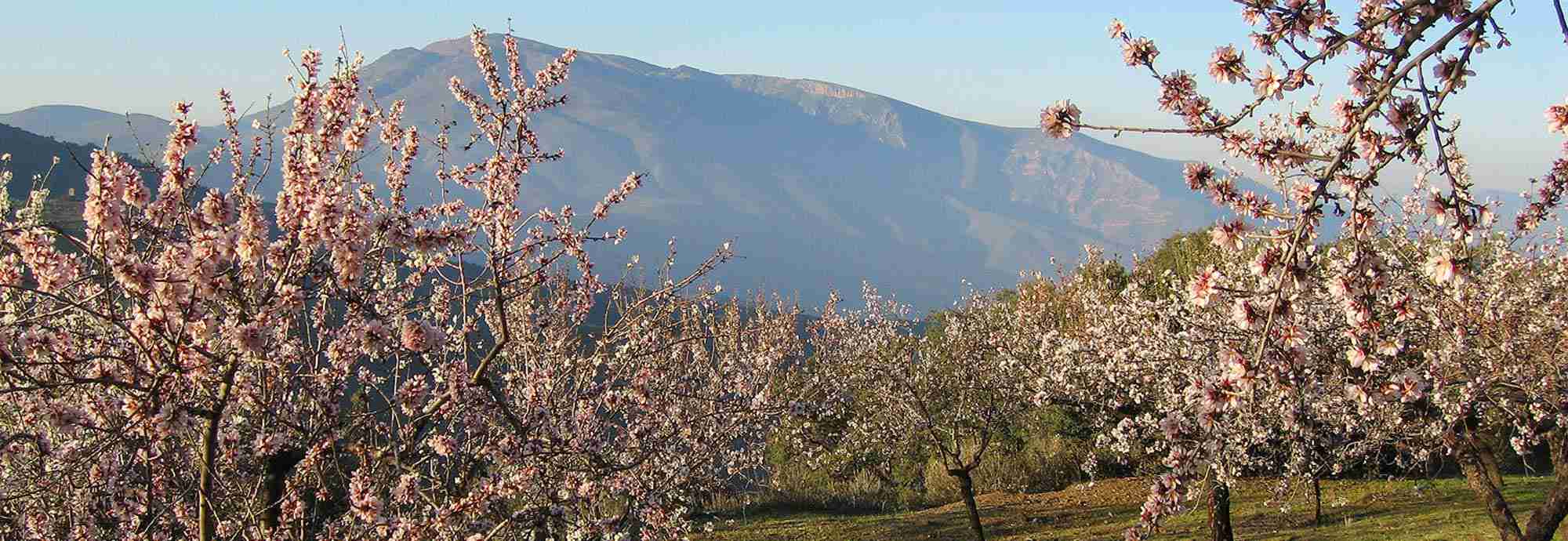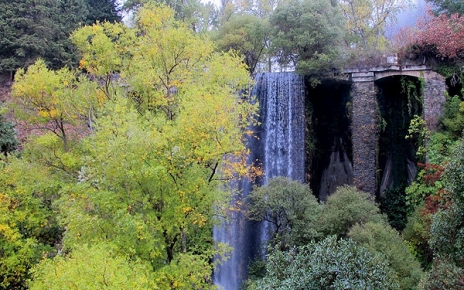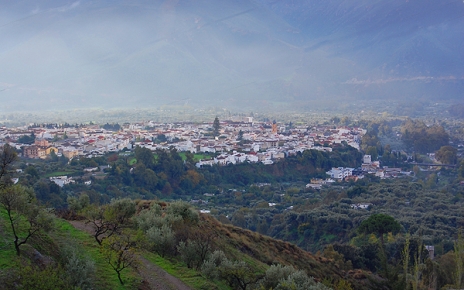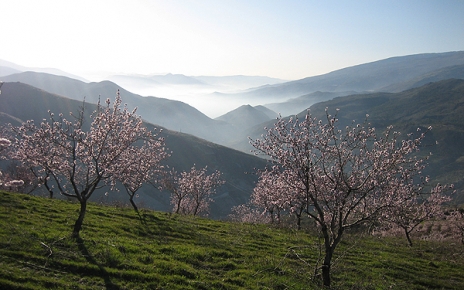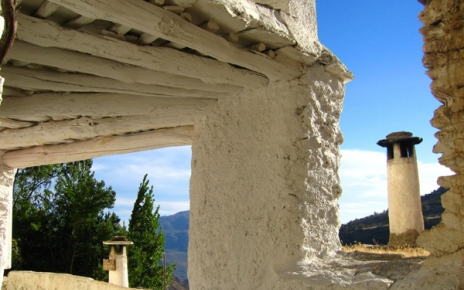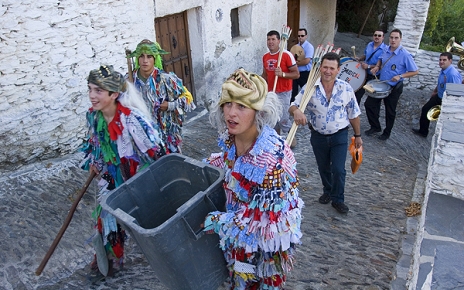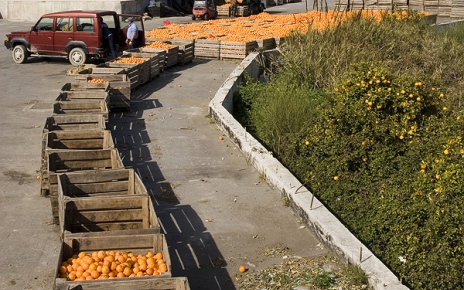Holidays in Alpujarras
Everything you need to plan the perfect holiday in Alpujarras: how to get there, the best places to stay, the best times of year to go, and an unbeatable selection of hand-picked holiday villas and cottages.
Find your Holiday home in Alpujarras
Summary
For those wanting a real feel of rural Andalucia, here is a special world all on its own. Between Granada and the Mediterranean coast, the sunny world of Las Alpujarras remains a genuine and affordable holiday refuge among Spain’s highest mountains.
If we at Rustical Travel enjoy returning to all the rural areas you see in these guides, there's one which has had the longest appeal. It always feels off the beaten track and we always feel at home.
In the far south of Spain, the mountains of Sierra Nevada rise up just before the sea. Even at this warm latitude, they are so high that winter snow lies thick upon the peaks.
The southern sunny slopes of the mountains face the Mediterranean Sea, and here a network of little villages has grown up over the centuries, creating the inhabited region known as Las Alpujarras.
Las Alpujarras divides neatly to offer two quite different holiday experiences:
The Low Alpujarra in the valley is closer to "civilization," better connected with Granada and the coast. The climate is warmer, swimming pools more in evidence, and architecture is often more modern.
The High Alpujarra up in the mountains is an older, quieter world, where little villages are strung out across the mountainside. It's comparatively cooler on temperatures (but still Andalucia-warm) and higher on charm.
It's intimately rural and very easy-going. Granada may be less than an hour away, but it feels like another world. Villages are generally silent, time passes more slowly, the vistas reach far and wide, people stop and talk to each other – one learns to wait patiently when two cars block the road and the drivers chat briefly – and you start to grasp the appeal of rural life. It's nothing glamorous or sophisticated, just peaceful simplicity.
After a day or two in Las Alpujarras, don't be surprised if all the hurry goes out of you."
It's a remarkably broad region, connected by few roads and little traffic. The towns number 5,000 inhabitants, larger villages have no more than 500, hamlets at the end of country lanes more animals than people. Pathways lead out along valleys and up gorges, past old chestnut trees and isolated cottages. You see mules ploughing hillside watered by ancient irrigation channels, in a hospitable climate that provides relief from the summer's heat.
Naturally, you can combine the two during a week's stay: simply drive half an hour up or down the winding but good mountain road that joins the Low with the High Alpujarra.
While the rest of Spain was undergoing rapid modernization in the '80s and '90s, a remote mountain world, so far south that it almost touches the Mediterranean Sea, was quietly going about its unhurried, pastoral business.
In Las Alpujarras, people were herding sheep and goats, fixing the curious flat roofs of their whitewashed houses, maintaining the irrigation channels cut into the hillside by the Moors centuries earlier, roasting pork ribs on embers in the street at fiestas, treading solemnly to Mass, taking time to chew things over with a neighbour, sitting in the musty shadow of a stable over a glass of strong local wine.
What's so special about Las Alpujarras is that – another 25 years down the road – all these things still go on. Still today, when the children have all the latest apps and even old ladies in mourning black have a mobile tucked away, the hearts and minds of the people and their bind to tradition are largely unchanged. The handful of foreigners that live among the hardworking villagers may have grown to form a community of individuals from all over the world, but the Alpujarra has absorbed them, makes allowances for them, finds them curious... and gets on with its old ways.
It's against the background of this old world, rooted deeply in family life, that any experience of Las Alpujarras takes place. When you are gazing at the mountains, you may also see, way below you, a man tilling the earth for his onions and peppers, growing vegetables for his family table.
The almond blossom you ramble past in January will be nuts picked late in the year and made into thick winter soup. The water that gushes past you in high summer, as you saunter down a slope through chestnut trees is being carefully channelled to tomatoes and melons, strawberries and lettuce.
After a day or two in Las Alpujarras, don't be surprised if all the hurry goes out of you and you find yourself adopting calmer, more natural rhythms. It's a place to take in, along with the healthy mountain air and the fresh spring water that flows from village fountains.
The altitude ensures four distinct seasons. In the quiet of winter, when sunny days make for exhilarating high altitude walks, the smoke of log fires eddies from the toadstool chimneys. But tourism is low key, and even in summer you can hike trails and hardly see another soul apart from a shepherd with his sheep and goats. You're more likely to encounter bird and other wildlife, including eagles, vultures, ibex and foxes.
There's history here, too. The last Moors in Spain held out in Las Alpujarras a hundred years after the rest of the country had fallen to the Christian reconquest. The design of the flat-roofed dwellings goes back to those times and the Moorish architecture of the Rif Mountains in Morocco, which you can just make out on clear days from the high Alpujarra.
The local gastronomy reflects the down-to-earth nature of the people. Expect generous platefuls of substantial fare, with the accent on pork.
Overview
The Low Alpujarra spreads down a semi-tropical river valley from the main market town of Orgiva and nearby Lanjarón. The climate is very warm and conducive to lazing by pools at secluded garden villas.
Orgiva
The Alpujarras' main market town, Orgiva (population 5,700) seems large and busy by comparison with everywhere else. It has the virtue of having the best shopping, including a lively Thursday morning market, and café-bar terraces that serve good breakfasts and tapas.
The focal point for the Low Alpujarra enjoys a semi-tropical climate. You'll see orange and lemon trees, palm trees, avocado. Holiday villas are mostly located close to town in the fertile valley of the River Gualdalfeo.
Although the privacy and peace-and-quiet of your holiday villa may be the main attraction, the town has a character all of its own and can surprise the causal stroller with scents of jasmine and honeysuckle, and colourful splashes of bougainvillea.
Lanjarón
This small spa town, much quieter than Orgiva, is best known for its mineral water. Lanjarón is the first place you come to after leaving the highway that runs between Granada and the Mediterranean coast. Water is everywhere in Lanjarón and everyone has their favourite fountain. The town is built on the lower slope of the mountains, where holiday homes enjoy good views out over the Guadalfeo valley.
just 30 minutes away up the mountain, is another story. Rugged mountainside is the setting for cottages, old villages and walking or horseriding amidst spectacular scenery. Traditional architecture and modern comfort combine at self-catering houses in the highest villages in Spain.
Bubión and Capileira, built way up the dramatic Poqueira Gorge, have the Sierra Nevada as a backdrop. The nearby Tahá district has equally impressive yet gentler terrain and some exquisite hamlets.
It's the High Alpujarra that provides the best sights, trails and photography. Plenty of walking routes: The views and the rambling are irresistible. The paths, mule tracks and forest trails are an open invitation to everyone to get a real feel for the place and enjoy wonderful mountain countryside and views.
Capileira
Pretty Capileira (population 570) crowns the Poqueira Gorge. The backdrop of the Sierra Nevada is as dramatic as the huge views south down the ravine to Bubión, Pampaneira and to Sierra Lujar, the last mountain before the Mediterranean Sea. The old streets of flat-roofed houses form a fascinating maze of alleys and passages on the side of the gorge. There are several bar-restaurant-cafés with terraces and WiFi. Walking paths lead down to the river, and up the gorge. The road continues up from Capileira to Sierra Nevada National Park.
Bubión
An easy 2-km stroll down the mountain road from Capileira. It's another tranquil village, with views that reach the Mediterranean Sea. From Bubión, footpaths lead down to Pampaneira, up to Capileira, or over the ridge to Pitres and the Tahá. Two traditional weaving workshops are of interest in Bubión: El Telar and Hilacar.
Pampaneira
The third village in the Poqueira Gorge is another interesting old settlement to wander round and explore. It's a popular stop for the occasional tour buses that make it up to the High Alpujarra and has a correspondingly high number of souvenir shops. As the lowest of the three Poqueira villages.
La Tahá de Pitres
Ranged from west to east – unusual for Las Alpujarras – the high valley of La Tahá (from the old Arabic word for "district") is only ten minutes from the Poqueira Gorge, yet has more hours of sunshine and is a little warmer. The landscape is less dramatic and gentler. There are some lovely walks from the timeless little hamlets and country restaurants to build into your itinerary for the day.
One of Spain's most famous cities and the site of the magnificent Alhambra Palaces is an easy drive from Las Alpujarras. Compact enough to walk around and unbeatable for tapas. There are a few buses between Las Alpujarras and Granada, but the service is limited.
BEACHES
The Mediterranean Sea is clearly visible from the mountains of Las Alpujarras and Granada's Costa Tropical is often on the list of holidaymakers' things-to-do. Don't expect golden sands, but do enjoy fried fish on the beach and a great climate. Motril has reasonable beaches but Salobreña a little further on has better. In our Local Guide for Rustical Travel holidaymakers, we direct you to one of the more hidden-away coves near Calahonda, with clear water and a good chiringuito beach restaurant.
BEST OF THE REST
Puerto Juviley
Interesting as a village whose charm stems from its unchanging nature. Tall reeds and grasses grow up along the riverbank. The atmosphere is almost Mexican. It's about ten minutes from Órgiva, and reached along the road from Órgiva to Torvizcón.
Sierra Nevada National Park
Above the Low Alpujarra rise Sierra Lújar to the south and the great range of Sierra Nevada to the north. The Sierra Nevada National Park offers an utterly different aspect to the same geographic area, with a high altitude climate and terrain, and snow atop Mulhacén mountain.
O Sel Lin
Sometimes referred to misleadingly as a "Buddhist monastery," it is a modest Tibetan Buddhist centre and retreat with an interesting stupa and stupendous views. It was inaugurated by the Dalai Lama in 1982. You can drive up almost all the way there. Drive down through Pampaneira, continue five minutes or so to the big curve at Padre Eterno and turn right up the track where horse riding is advertised. Afternoon visits are preferred.
Architecture
One of the most characteristic features of the High Alpujarra villages is their unusual architecture. Note the unique flat-roofed design of the houses with their chimneys, a feature going back centuries and originating with the Moorish occupation of Las Alpujarras, who imported the building design of the Berbers in sun-parched northern Africa.
Public swimming pool
Just outside Pitres is a campsite with a large open air swimming pool, surrounded by lawns, that opens to non-campers during the summer months. There's a restaurant here, too.
River Poqueira
The river through the gorge pools to form impromptu bathing spots. They're not broad enough for swimming, but the cold mountain water will cool off the most overheated hiker.
Horse riding
Suitable for beginners and experienced riders. Tracks pass through Andalusian mountain countryside, through orange groves and over rivers. Dallas Love's stables just above Capileira have an excellent and deserved reputation.
Biking
Good, well-maintained cross country mountain bikes are available for hire in Capileira. You can book a biking guide to ride the most interesting routes.
FIESTAS
Low Alpujarra
On the eve of San Juan, 24th June, when the rest of Spain celebrates the saint with fire rituals, the people of Lanjarón cool off the hot night with a no-holds-barred water fight in which getting drenched is compulsory. Locals from other Alpujarra villages know better than to attempt to drive through Lanjarón that night!
Orgiva's main fiesta, the feria grande, is held the last week in September. It involves activities such as floats and photographic contests, costumes, bingo and games for children, and bands that keep people dancing all night.
Earlier in the year, a fortnight before Easter is Orgiva's fiesta of the Santísimo Cristo de la Expiración, a religious feast day and excuse for letting off a barrage of fireworks.
High Alpujarra
In January, the chiscos is one occasion when a village fiesta is meant just for the locals. They gather round bonfires in neighbourhood streets to roast pieces of pork on a date that would have traditionally coincided with the annual matanza, or killing of pigs to make sausages and ham. The main summer festival in each village with live bands and dancing is celebrated over an August weekend. The first weekend in November, the mauraca involves more standing round bonfires, this time roasting chestnuts and drinking cups of anis.
FOOD AND DRINK
The culture of tapas is alive and healthy in the Alpujarras. In the province of Granada, a tapa with your beer or glass of wine comes free. Even a few olives are a welcome accompaniment to a drink and they get better with each refill. They can often be generous substitute for a decent meal.
In the Low Alpujarra, supermarkets are best in Orgiva. A large market with textiles and other products takes place in Orgiva on Thursday mornings. Local cuisine in the Low Alpujarra includes goat, almonds and figs in season. Migas is a filling dish based on fried crumbs. Otherwise, standard fare is varied by restaurants catering to the tastes of international residents and visitors. The formidable plato alpujarreño is a fry-up consisting of spicy sausage, egg, black pudding and sliced potato with onion and green pepper."
Wines from the Low Alpujarra, especially the Sierra de la Contraviesa, have been improving over the years to acquire a definite respectability. The Low Alpujarra's proximity to the Mediterranean coast means that excellent fish and seafood are a short drive away in Motril, where the best restaurant options are in the port.
Supermarkets in the High Alpujarra are best in Capileira and Pitres. Each small village also has its own market day, when vendors sell cheap, fresh direct from the truck.
The mountainous Alpujarra used to be one of Spain's poorest areas. It retains a simplicity in its gastronomy that is amply compensated by plentiful servings that will leave no one unsatisfied. The formidable plato alpujarreño is a fry-up consisting of spicy sausage, egg, black pudding and sliced potato with onion and green pepper.
Migas is a filling dish based on fried crumbs and mixed with chopped sausage. Pork is synonymous with "meat" here and features highly on any menu. Vegetarians tend to have a harder time of it, but will be impressed by the giant mixed salads and savour the almond soup, one of the few genuinely autochthonous recipes.
For the sweet tooth, soplillos are the local speciality: almond meringues.
For a sparsely populated area, the High Alpujarra is well provided for in terms of restaurants, including countryside venues with views.
Climate
Over an extension of just 30 km, from the valley that ends at Granada's Costa Tropical to the high peaks of the Sierra Nevada massif, the region of Las Alpujarras concentrates all existing Mediterranean climates.
This variety of climates in such a short distance makes the region unique. There is no other Mediterranean area in the world with a range of climate and elevation to match Las Alpujarras.
Leaving behind avocado and mango orchards by the coast, the land rises inexorably and eventually soars to snow-capped peaks over 3,000 metres high. You have switched climate from semi-tropical to alpine. Even at the height of summer, patches of snow persist in the heights, a contrast that makes the area rather exotic.
The differences in temperature and rainfall between lower and higher areas of Las Alpujarras are normally very distinct, although the dry season affects the whole area in a uniform way. There is a clear lack of precipitation from May to October.
In the valleys of the Low Alpujarras, summers are long and hot but never as relentlessly so as in the interior of Granada province, including Granada capital, where there is no influence from the sea to moderate temperatures. The eastern Alpujarras are usually dryer and slightly milder than the western Alpujarras. Towards the eastern reaches of the Low Alpujarras, the climate becomes semi-desert. Figs, almonds and vines are common here; the landscape is very dry and good wines are produced in the Contraviesa.
Winters in the Low Alpujarras and nearby coastal areas are normally mild. There are no frosts and sub-tropical vegetation grows happily.
At their impressive altitude, the mountains of the High Alpujarras enjoy a Mediterranean climate with a difference. If spring comes to Low Alpujarras areas in March, the same flowering season is delayed here until May. In High Alpujarras villages such as Capileira, Bubion or Pitres, temperatures are lower all year round.
Summers are warm or hot during daylight hours, but a regime of mountain breezes operates to keep summer temperatures within perfectly bearable limits, when compared to other Andalucian areas. Outside the summer season, there can be important contrasts of temperatures between daytime and nighttime.
Temperatures at the summits of the mountains are properly alpine. On 1st June 2003, it snowed in Sierra Nevada while people were bathing at the coast on a hot, sunny day. It's a rare occurrence, but it can happen. During winter, the entire mountain range is covered in snow from upwards of 2,300 metres. High Alpujarras villages are generally situated considerably lower than this, at altitudes between 1,000 and 1,300 metres, but winters are rigorous and frosts can occur at almost any time of year.
Winter nights are cold, but sunny days are very common. Winter rains are welcomed by farmers all the more so since precipitation is sparse during the rest of the year.
ALPUJARRAS CLIMATE SUMMARY
Las Alpujarras comprises the southern face of the Sierra Nevada mountains from high peaks to low valleys. The region ranges through all known Mediterranean climates from semi-tropical to alpine. A common aspect is the virtual absence of rain for approximately 5 months, from early May to October.
Maps
Getting there
AIRPORTS IN THE ALPUJARRAS
The usual route from abroad to holiday villas in the Las Alpujarras is from Malaga Airport (AGP). The drive to the Low Alpujarra takes a total of 1 hr 30 mins along the coast and then inland towards Granada. The drive to the High Alpujarra takes 2 hrs. Malaga is a major international airport and has plenty of flights.
Granada Airport (GRX) is 30 mins closer, but only one airline currently flies there: BA from London City Airport.
The other possibility is Almeria Airport (LEI).
CAR HIRE
We recommend a car for getting to your rural holiday villa in Las Alpujarras. It's practical, convenient and needn't be expensive. It often works out cheaper than taking a taxi and is then invaluable for shopping, eating out, visiting places of interest, days out at the beach or in Granada, and making an easy return trip at the end of your stay.
Rustical Travel doesn't have a professional arrangement with any particular car hire company and we suggest you shop around for car hire using a broker such as rentalcars.com or similar.
It's easy to compare prices of rentals with companies that operate at the airport you fly into, and all the reputable agencies have online payment for advance booking these days.
You don't have to use the broker. If you prefer, you can check the car hire companies own websites, compare prices, and book direct.
Driving times from the airports above are shown on the villa's individual property page. You will receive a map with detailed directions for your holiday villa as one of your holiday documents from Rustical Travel.
If your villa is in the High Alpujarra, a car with decent uphill power (not the smallest budget option) is in order. The mountain road up to the High Alpujarra was resurfaced a few years ago. It has plenty of bends, of course, but it's in good condition and has little traffic.
If your property is in Bubión village, where streets are narrow and winding, choose a smallish car. If your villa is accessed along a track, be sure to rent a vehicle with good clearance.
Parking is free of charge in the towns and villages of the Las Alpujarras.
PUBLIC TRANSPORT
An early flight to Malaga might connect to a bus to Granada in time to connect to another to Las Alpujarras, but it's by no means guaranteed. Nine buses a day operate to Orgiva in the Low Alpujarra, but only three to the High Alpujarra and they take their time, stopping at all the little villages along the way. If you're staying in a villa in the countryside, you may then be relying on a taxi to get back and forth to town.
Taking the bus is a little easier if all you're aiming for is a day out in Granada, although you still face another bus or walk into town once you're there.
For villas in rural locations and all practical purposes, a car is virtually essential.
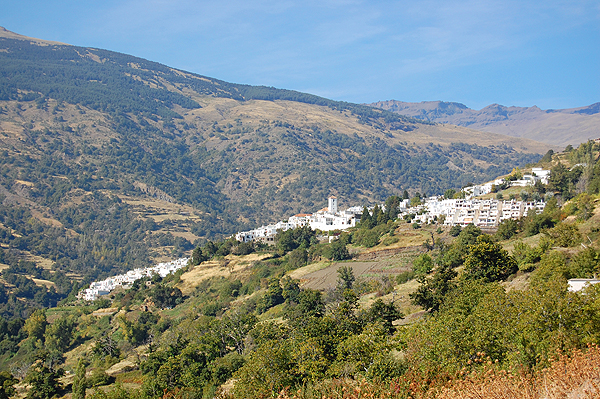
Capileira village in High Alpujarras
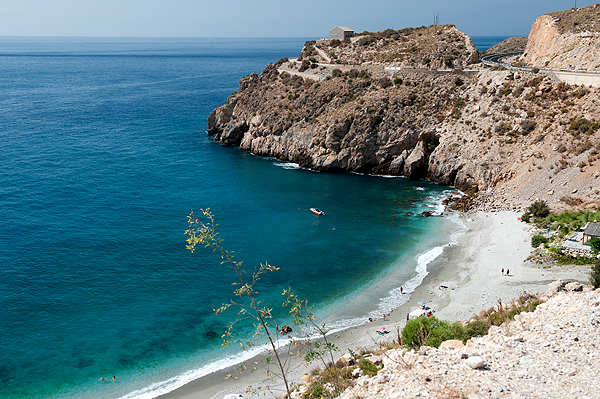
Our favourite beach near Alpujarras : La Rijana beach

Low Alpujarras seen from High Alpujarras
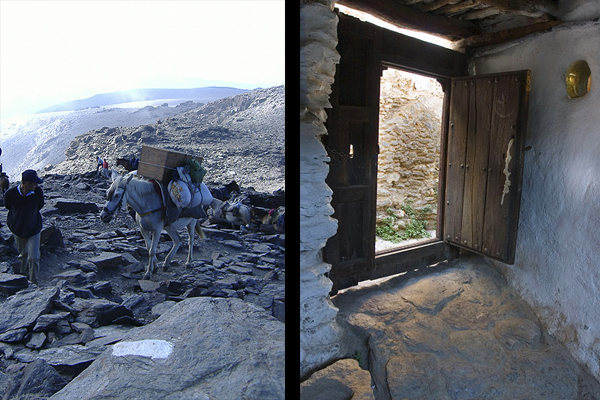
Alpujarras scenes
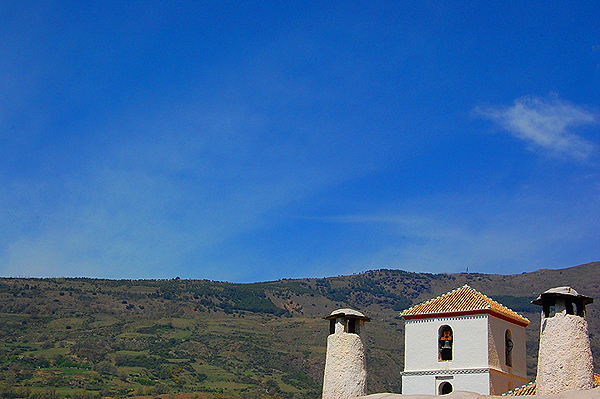
Bubion skylight
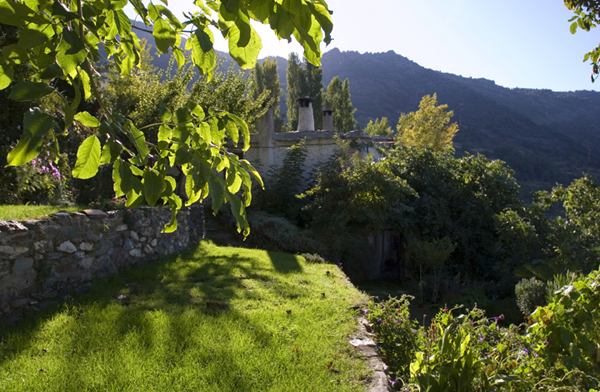
Gardens at holiday home in Bubion (Ref.AP20)

Dique 24 near Carataunas village
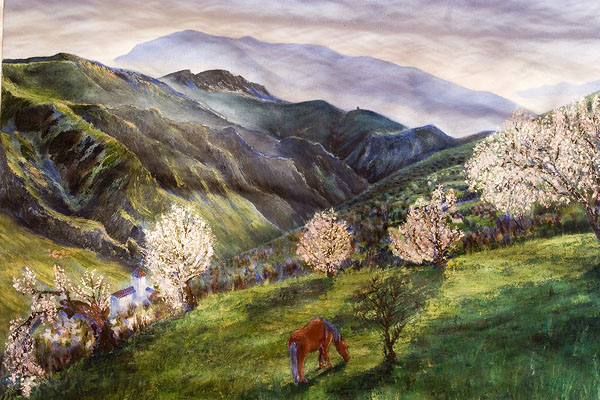
Local artist Chris Hoare picture of Poqueira valley

Orgiva after a rainy day in November 2012
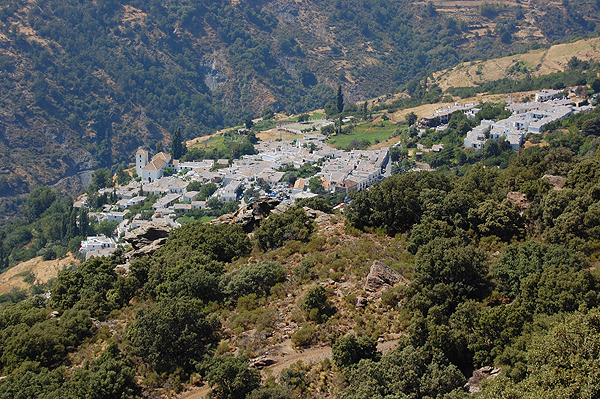
Bubion seen from GR7 walking path

Tuesday market in Capileira village
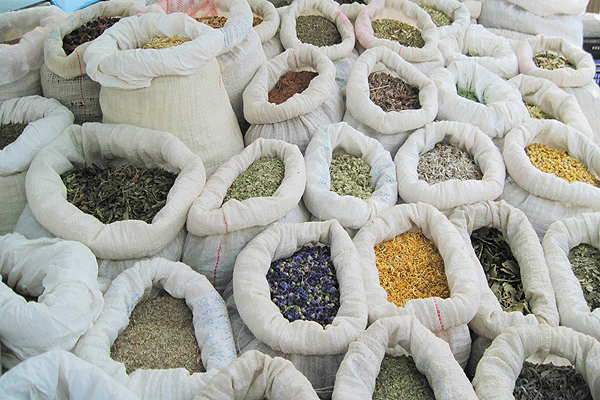
Buying spices in Orgiva market

Almond trees flowering in early spring
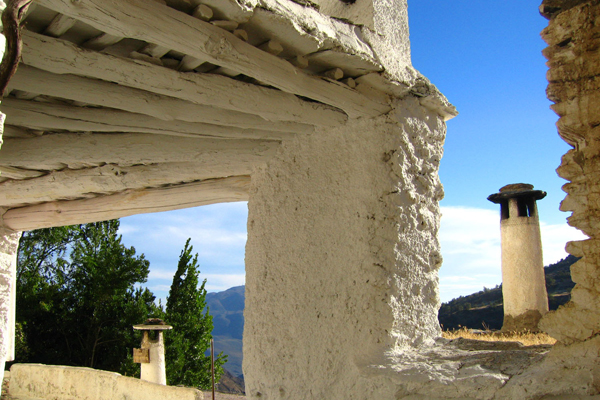
Capileira roofs

Rio Chico , deep ravines in Alpujarras are rich in nature
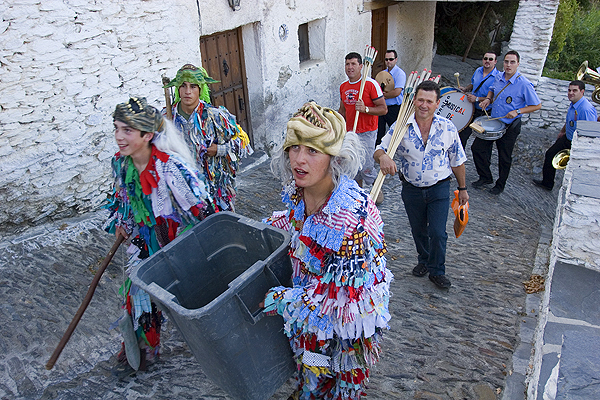
Fiestas in Capileira
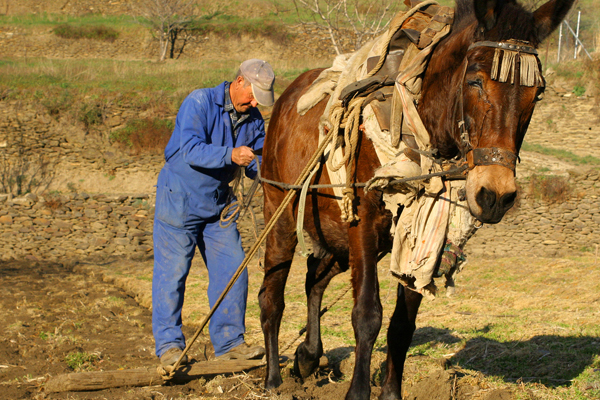
Traditional farming

Longest biking descents in Europe in Alpujarras
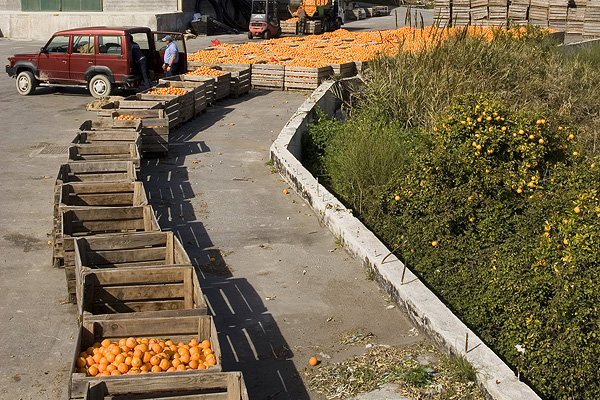
Orange collection near Orgiva
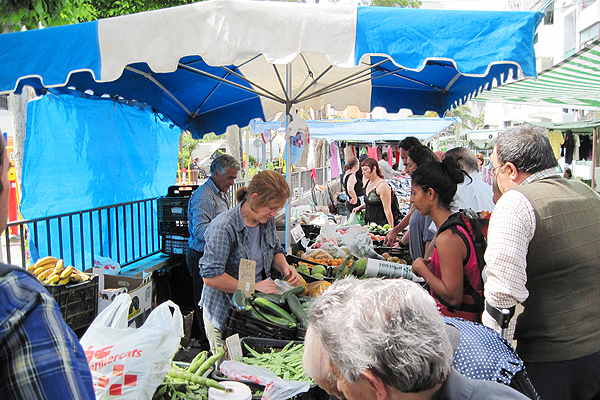
Street market in Orgiva on Thursdays

O Sel Ling Buddisht centre in High Alpujarras

Orgiva looking north towards Sierra Nevada
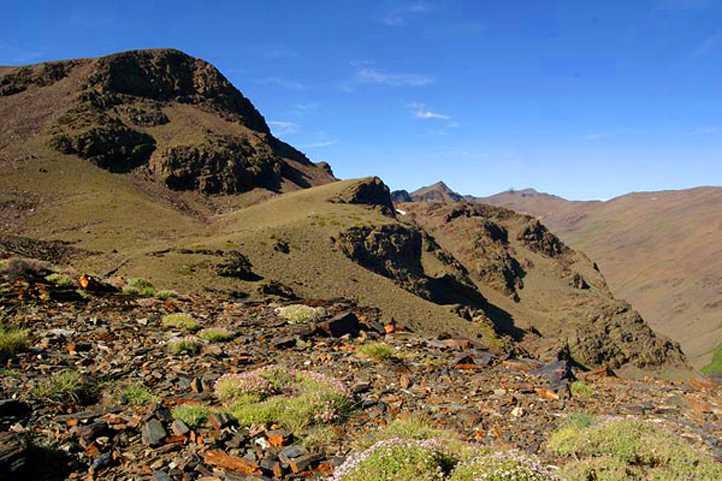
Hiking Cerro del Caballo
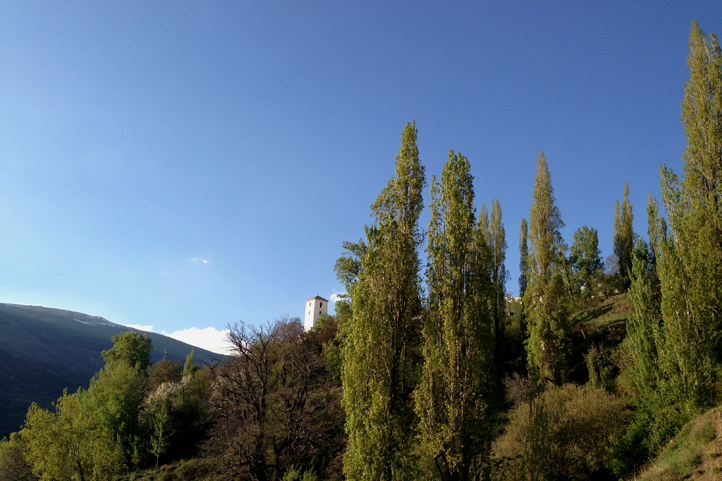
Bubion church seen from GR7
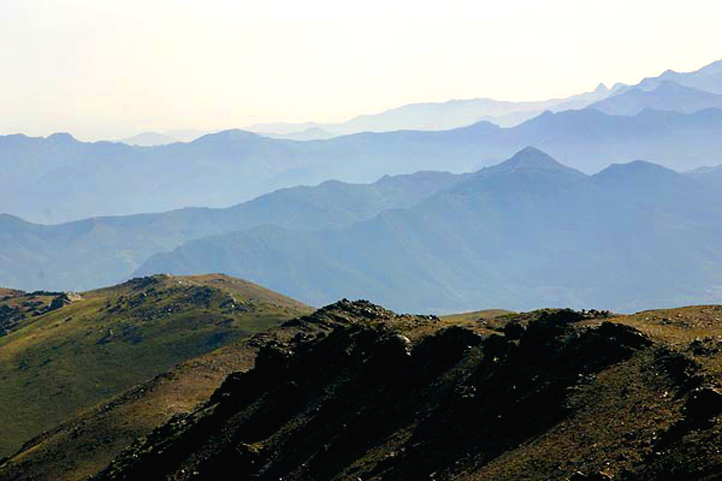
View of Malaga Mountains from Sierra Nevada
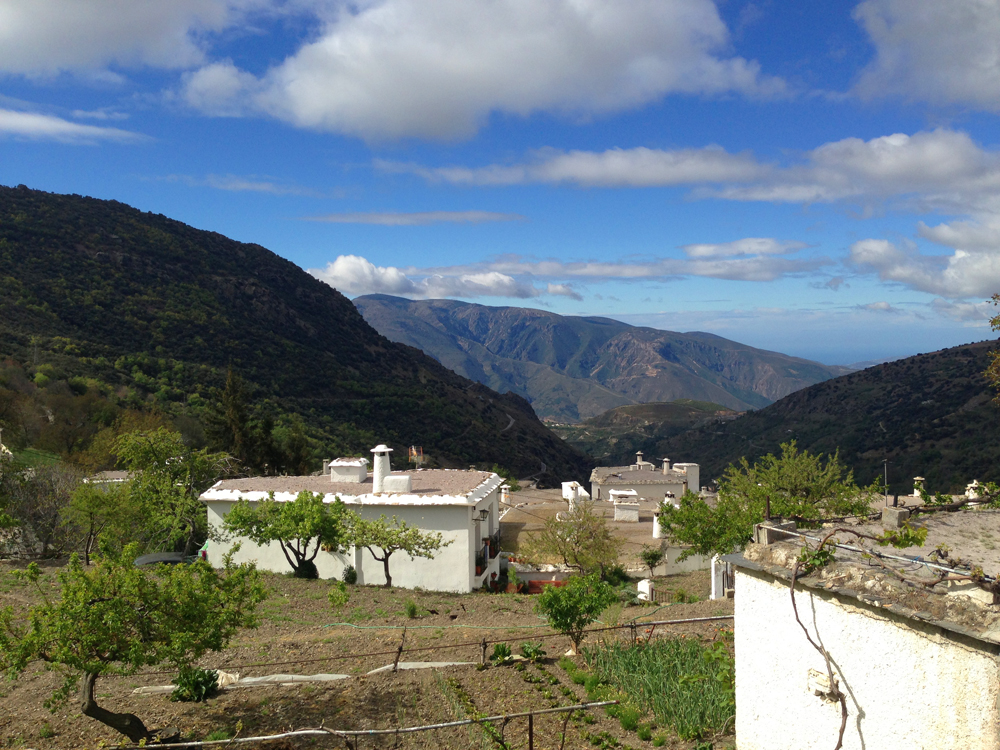
Bubion 30 min before it started raining
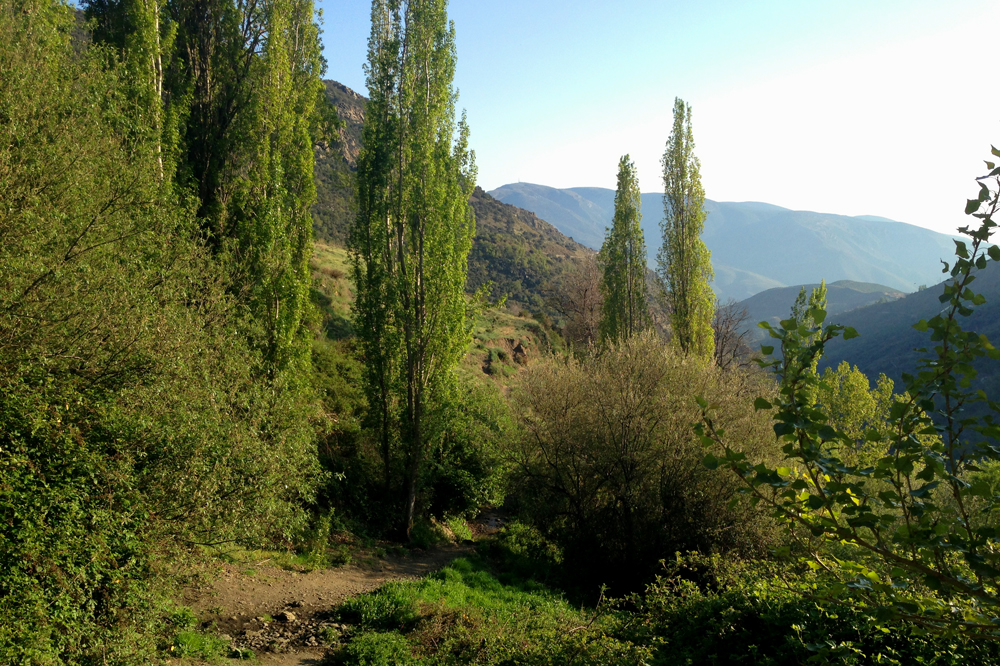
GR7 from Bubion to Pampaneira
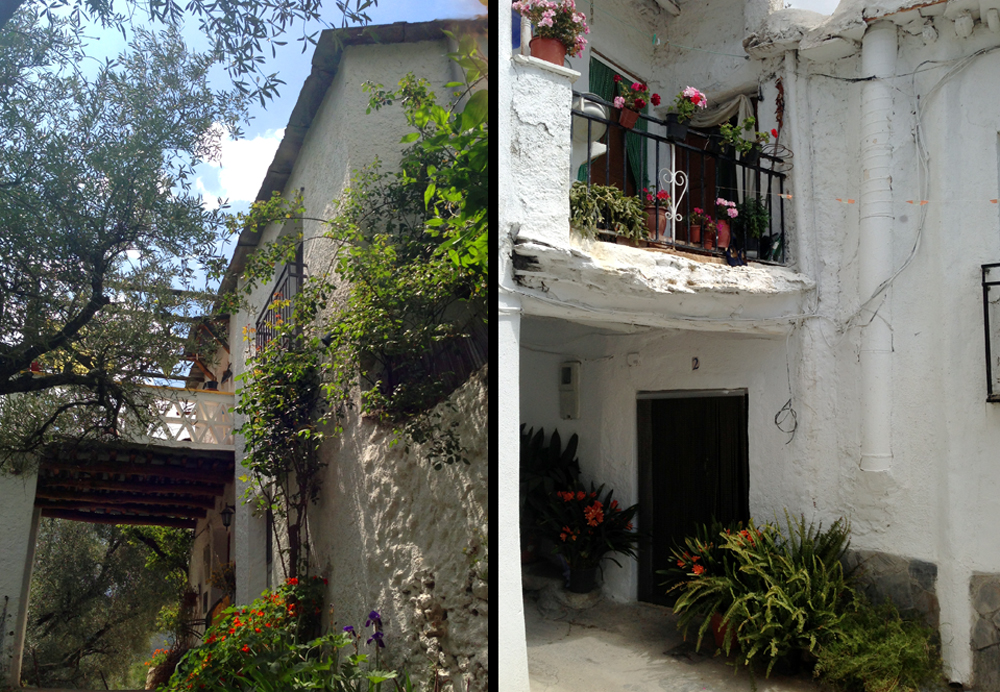
House in Fondales

Walk from Fondales to Ferrirola





























